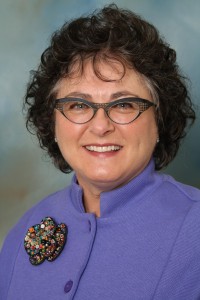
Up to 40% of young girls with type 1 diabetes also have an eating disorder thus making them withhold insulin. It’s up to clinicians to know the proper ways to treat both conditions, not one or the other.
When Asha Brown started withholding her insulin at 15, she was tired of being different, and she was determined not to let her type 1 diabetes hold her back from performing as a dancer and actress.
“For a number of reasons, I realized that, to me, it would make more sense to keep my blood sugars high because then no one would think I was weak or fragile, I wouldn’t be having lows while performing,” she says. “I didn’t want diabetes to get in the way, and I was starting to feel really angry that my diabetes was going to prevent me from being successful.”
Around this time, Brown was also inundated with poorly explained or flat out wrong information about weight and weight loss, especially when it comes to insulin. Her doctors, the magazines, and articles she read, all implicated insulin as the “fat hormone,” since it causes patients with T1D to initially gain weight.

Photo by Beth Bagley
“When you hear that and you’re 16,” she says, “you’re like what?!” Brown began to obsess over maintaining a healthy weight, and that, compounded with her anger at her disease, caused her to start omitting insulin to lose weight, as well as numb her to all the anxieties that come with a chronic condition. That began a 10-year cycle of withholding her insulin then binging, then withholding again, along with the crippling guilt and vows to never do it again.
“I struggled with variations of an eating disorder, including insulin omission, for a decade, and I got to a point where I very much realized how much it was preventing me from living my life,” Brown says. The irony is that she was so worried that her diabetes would hold her back, but the way she coped with it is what hurt her acting reputation and began to ruin her marriage. “I realized I needed help,” she says.
“We don’t need any more proof that this is a real thing. It’s time to stop having that argument, and it’s not an endocrinologist’s responsibility to fix all this, but they do need to know where to send them and where to get more information.”
— Asha Brown, founder and executive director of We Are Diabetes
“Diabulemia”
As many as 40% of young girls and women with T1D have developed or will develop an eating disorder, and stories like Brown’s shed light on a familiar and not uncommon pattern. Decreasing insulin doses, withholding insulin entirely, or even tampering with the insulin to try to render it ineffective to lose or control weight is called eating disorder-diabetes mellitus type 1 (ED-DMT1) or “diabulimia,” although the latter term is controversial since it is not medically recognized or completely accurate. It’s an extremely dangerous combination as it can lead to ketoacidosis and earlier and severe diabetes complications like blindness, kidney disease, heart disease, and nerve damage, as well as an increased mortality risk.
Another problem is that medical providers may often not be aware that their patients have an eating disorder, they may dismiss the disorder entirely, or they may simply be insensitive when it comes to discussing these issues with their patients. Providers also tend to get frustrated with these patients, because some of the classic signs of ED-DMT1 could be written off as simple noncompliance.
“A lot of physicians can be focused on numbers,” says Dawn Taylor, PsyD, LP, of the Melrose Center, a specialized treatment center in St. Louis Park, Minn., that deals with eating disorders. “Eating disorders can mimic depression, and these patients have low coping skills. It’s important to remember that you can’t just treat one or the other.”
Brown echoes Taylor’s sentiments. “Those numbers are inside a human body, with feelings and emotions,” she says. “I’ve had doctors who acted like I was wasting their time; there was nothing human about our conversations. If any doctors I had seen in those 10 years had said, ‘Are you struggling with some sort of body issue or eating disorder? Does that have something to do with why your blood sugar is so high?’ I think I would have burst into tears.”
Help Me
When Brown realized that ED-DMT1 was controlling and destroying her life, in 2009, she went to the Melrose Center for treatment. There she met Marcia Meier, RN, CDE, a psychiatric nurse with experience in pediatric endocrinology. Meier is a manager of the program that treats patients with ED-DMT1, a joint effort between the Melrose Center, the International Diabetes Center, and the adult and pediatric endocrinology clinics at Park Nicollet in Minneapolis. The program — started by a grant from the parents of a daughter with ED-DMT1 — is now in its 11th year, and they’ve seen about 300 patients with the dual diagnosis of T1D and an eating disorder.
“We look at these things differently than just out-of control diabetes,” Meier says. “Endocrinologists and diabetes educators tend to become really frustrated in seeing patients that come in time after time and they’ve talked about the same things and no change is made. They’re frustrated and don’t know what to do.”
When Brown arrived at the Melrose Center, she was admitted to their inpatient treatment program, in which she built a relationship with Meier; they talked openly and honestly about ED-DMT1. “Don’t be afraid to start asking some questions,” Meier says. “You can’t do that if you don’t know somebody, but you’re going to know them if they’re coming in for endocrinology and education appointments. First of all, just acknowledge that it’s great that they’re there for their appointment. Don’t find everything that they’ve done wrong.”
Meier stresses that things could be done differently when treating someone with ED-DMT1. For instance, it’s not necessary to weigh a patient with an eating disorder every time she or he first comes in. “Right off the bat, there’s a number they hate,” she says. “They don’t care what it says; they hate it.”

Patients who use meters also have the ability to present their lives to their providers, right there in the black and white of a printed report. A patient with an eating disorder might show that they’ve had the background insulin running, but they show very few tests, and then there might suddenly be a four-day period of many tests. “It’s better to ask what happened in those four days, rather than say ‘why didn’t you test on this day’ because then you’d turn off the person to respond to you,” Meier says.
One of Meier’s patients is a woman who works with kids and frequently takes them on camping trips. On those trips, Meier can see that the patient completely takes care of herself; it’s reflected in her meter. “So I asked how we can build on that, on those trips, to do that when [she gets] back home. You’re always looking for ways to build on what it is that they’re doing right.”
Brown stayed in the program for a year — two weeks of inpatient care, then weekly outpatient appointments, and then monthly. She is now the founder and executive director of We Are Diabetes, an organization whose mission is to spread awareness about ED-DMT1 and support those who suffer from it. “Some of my clients have told their doctors [they suspect they have ED-DMT1], and [the doctors] have just been like ‘Oh’ or ‘That’s not a real thing,’” Brown says. “We don’t need any more proof that this is a real thing. It’s time to stop having that argument, and it’s not an endocrinologist’s responsibility to fix all this, but they do need to know where to send them and where to get more information.”
Help You
The Melrose Center gets patients from all over the country because those patients have exhausted their options in their respective areas. Medical professionals in those areas may not yet be aware of ED-DMT1, or they may lack the resources to properly care for those patients. But the problem is that once patients leave the program at the Melrose Center, they have to either return home or move to Minnesota.
Treating the combination of diabetes and an eating disorder requires professional help for both. “It’s important to understand how connected diabetes and eating disorders are,” Taylor says. “Diabetes and eating disorders collide and fuel each other. You have to deal with the collision of the two.”
These patients are looking for some kind of escape from their diabetes, according to Taylor. “Patients constantly say, ‘I just want a vacation from my diabetes,’” she says. And they feel like they can achieve that by keeping their blood sugars high. It’s obviously a very dangerous way of thinking, so it’s important to navigate these waters carefully.
Brown, Meier, and Taylor all agree that the first step is asking the right questions and focusing on what the patient is doing correctly, rather than chastising them for things they might be doing wrong or neglecting when it comes to caring for themselves. Building comradery and a trusting relationship is key, as well as building a network of like-minded providers. “One of the things we’ve seen with both sides — the diabetes side and the eating disorder side — is that if they don’t know the language of the other disease, a person loses trust in them right away,” Meier says.
It’s also important to understand why these patients are doing the things they’re doing, and try to avoid frustration as best as you can. “Don’t just get mad or frustrated with them if they forget their records or are noncompliant,” Taylor says. “Ask why they might be doing those things.”
Meier agrees: “Ask what is going right today, and get away from thinking that this person is coming in and just never doing what they should do. The other way of thinking is that this person has tried to do the best they can do with
what they have available to them.”
Bagley is the associate editor of Endocrine News and conducted most of the interviews and research for this article while at AADE15 in New Orleans in August. He wrote about endocrinologists’ problem-solving skills in the August issue.

